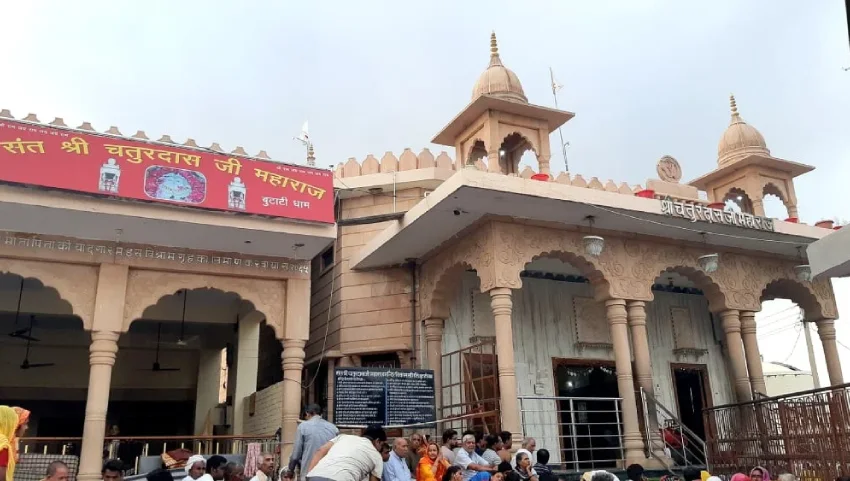
Ram Janmabhoomi
Ram Janmabhoomi is in Ayodhya, Uttar Pradesh, and holds unmatched significance in the hearts of millions of Hindus worldwide. It is highly believed to be the birthplace of Lord Rama, one of the most revered figures in Hindu mythology. The site has been at the centre of both religious devotion and historical controversy, making it a topic of great importance and debate.
Explore the rich tapestry of history, faith, and resolution in our comprehensive article on Ram Janmabhoomi in Ayodhya tour. From its ancient roots to its modern-day legal and cultural significance, immerse in the depths of Ram Janmabhoomi. Let's take a deep dive in this article.
Historical & Religious significance
The roots of Ram Janmabhoomi can be found in the ancient epic Ramayana, where Ayodhya is mentioned as the birthplace of Lord Rama and the capital of the kingdom of Kosala. The epic tells the story of Lord Rama's life and exploits, presenting him as a model king and a representation of virtue. Ram Janmabhoomi is more than just a place; it is a holy pilgrimage site and an embodiment of Hinduism for millions of people.
The Ayodhya & Babri Masjid dispute
The modern history of Ram Janmabhoomi is entangled with a long-standing dispute that gained national and international attention. The Babri Masjid was built by the Mughal emperor Babur in the 16th Century and stood on the same site. The dispute arose when some Hindus claimed that the mosque was constructed after demolishing an ancient temple marking the birthplace of Lord Rama.
This dispute reached its peak on December 6, 1992, when a large crowd of activists demolished the Babri Masjid, leading to widespread communal tensions and riots across the country. The incident triggered legal battles and debates over the rightful ownership of the site, with both Hindus and Muslims presenting historical and archaeological evidence to support their claims.
Architecture of Ram Mandir
Following the Supreme Court's verdict, preparations began for the construction of the Ram Mandir at the Ram Janmabhoomi site. The temple is envisioned to be a grand architectural marvel, showcasing the rich cultural and religious heritage of India. The construction project involves contributions from people across the nation, reflecting a collective effort to fulfil a long-cherished dream.
Growing impact on devotees
The outcome of the Ayodhya dispute has had a lasting impact on Indian society. The path from conflict to reconciliation represents the Indian ethos's adaptability and inclusion. It is evidence that individuals may unite for a similar goal despite differences in their religious views.
The settlement of the Ayodhya dispute has created opportunities for interfaith communication and comprehension. It has given people a chance to mend and rebuild, highlighting the necessity of social harmony and unanimity in a diverse and pluralistic society.
How to reach?
Ram Janmabhoomi is located in the city centre of Ayodhya, about a few kilometres away. The Ayodhya Airport is also known as Faizabad Airport and is situated approximately 8-10 km from the Ram Janmabhoomi. It can be covered via a 15 to 30-minute drive.
The destination is about 1.5 to 3 km from the Ayodhya Railway Station in Dharmakata; it is accessible even with a 20-minute walk. There are a couple of bus stands in Ayodhya at Ram Katha Park. This bus stop is 1.7 to 2.5 km away from Ram Janmabhoomi.
There are bus stands at Faizabad Cantonment and at the Circuit House at the Rajkiya Uddyan Cantonment Road as well.
Nearby Religious Sites to visit in Ayodhya
Hanuman Garhi
A temple dedicated to Lord Hanuman lies on a hill and offers a panoramic view of Ayodhya. Devotees climb the stairs to seek the blessings of the deity.
Kanak Bhavan
Dedicated to Lord Rama and Goddess Sita, Kanak Bhavan is known for its stunning architecture.
Treta Ke Thakur – The ancient temple is believed to be one of the few surviving structures from the Treta Yuga. It is dedicated to Lord Rama and is a significant pilgrimage site for everyone.
Nageshwarnath Temple
Dedicated to Lord Shiva, this temple is one of the oldest in Ayodhya. It is said to have been established by Kush, the son of Lord Rama.
The religious shrine unveils a tapestry woven with threads of faith, history, and resolution. Now that you have gained an insight into its ancient roots and contemporary legacy book your Ayodhya tour package to discover the famous Ram Janmabhoomi in one go.


































